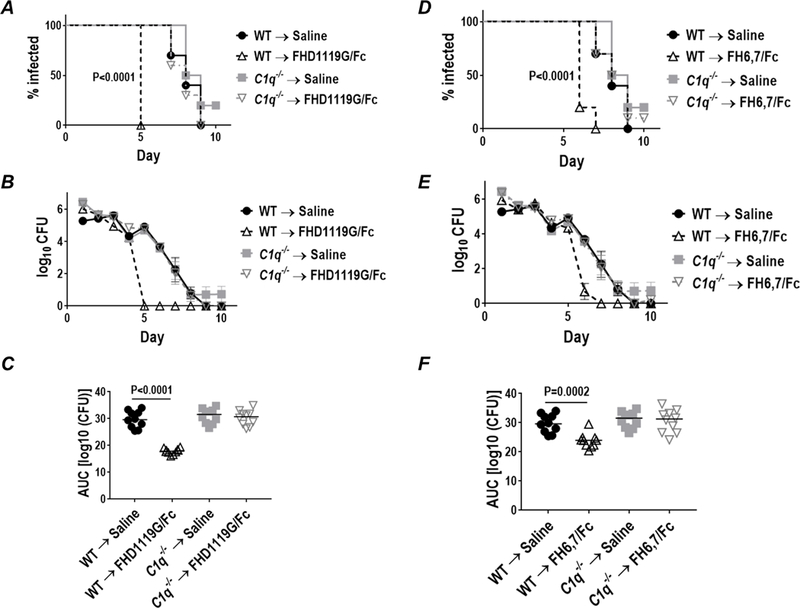Figure 7.

FH/Fc requires an intact classical pathway for efficacy. Wildtype C57BL/6 mice or C1q−/− mice on the C57BL/6 background (n=10 mice/group) were infected with 4 × 107 CFU N. gonorrhoeae strain OC7 and treated with either saline, FHD1119G/Fc or FH6,7/Fc (both at 10 µg/d starting on the day of infection through day 10). Efficacy of FHD1119G/Fc is shown in A–C, while efficacy of FH6,7/Fc is shown in graphs D–F. Note that the saline treated controls are the same for both sets of data; results with FHD1119G/Fc and FH6,7/Fc are shown separately for clarity. A and D. Kaplan Meier curves showing time to clearance of infection. Groups were compared using the Mantel-Cox (log-rank) test. Significance was set at 0.008 (Bonferroni’s correction for comparisons across four groups). B and E. Log10 CFU versus time. C and F. Bacterial burdens consolidated over time (Area Under the Curve [log 10 CFU] analysis). The four groups were compared using the non-parametric Kruskal-Wallis equality of populations rank test. The χ2 with ties (three degrees of freedom) was 22.4 (P<0.0001) for C and 18.5 (P=0.0003) for F. Pairwise comparisons across groups was made with the Two-sample Wilcoxon rank-sum (Mann-Whitney) test.
